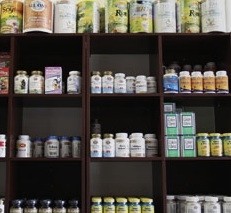FDA develops rapid screening for adulterants in weight loss products

Writing in the Journal of Pharmaceutical and Biomedical Analysis, FDA scientists present a procedure using portable and bench-top ion mobility spectrometers to screen for active pharmaceutical ingredients (APIs) in tainted dietary supplements.
“Ion mobility spectrometers are not meant to replace traditional laboratory instruments such as mass spectrometers; however, these devices are currently being implemented as screening tools at FDA field locations in order to effectively prioritize collection of products for official FDA laboratory testing,” explained the scientists, led by Jamie Dunn from the FDA’s Division of Pharmaceutical Analysis in St. Louis, MO.
“We have demonstrated that portable and benchtop IMS instruments can be applied to qualitative screening of weight-loss dietary supplements for undeclared adulterants at low levels (below 20 ng).”
Quick and easy
Ed Wyszumiala, dietary supplement program manager at NSF International, told NutraIngredients-USA that the new test, “makes it quicker and easier, but more importantly, it’s a tool that is telling you, that you should be screening weight loss products for potential adulterants.
“Whenever methods are published on this type of testing, it takes away the argument ‘we didn’t know how to test for this’ and that it could be a known potential adulterant.”
Increased focus on adulterants
Cara Welch, PhD, Sr VP of scientific & regulatory affairs for the Natural Products Association (NPA), told us that IMS is “definitely a viable method for a quick screen of incoming products or ingredients and hopefully it makes an impact on the rate at which these adulterated products find their way to the market.
“We know FDA is using it to screen and I’m sure it is also used in industry. But I would add that manufacturers need to be forward thinking here and not only test for known adulterants but also the unknown (possibly newly created) analogs that have the same effect.”
GMP requirements
Wyszumiala added that there is “some posturing coming from FDA on adulterants”.
At the recent CRN Annual Symposium for the Dietary Supplements Industry, Michael Landa, Director of the Center for Food Safety and Applied Nutrition, FDA, said that the Agency has concerns over tainted dietary supplement products promoted for pain/inflammation and diabetes.
“Add that with weight loss, sports supplements, and erectile dysfunction products, the known spiked and adulterated categories of products are widening in the eyes of the agency,” said Wyszumiala.
“Testing for known or suspected adulterants is part of the GMP testing requirements, so it is interesting that the agency is becoming more vocal on pharma actives in supplements. Note this doesn’t include economic adulteration of raw materials which is a whole other topic.”
Procedure
The FDA scientists developed a procedure using a portable Ion mobility spectrometry (IMS) spectrometer. The instruments and samples were shipped to regional FDA laboratories in New York, Pennsylvania, Georgia, Michigan and California.
Results showed that 10 APIs (fenfluramine, fluoxetine, orlistat, phenolphthalein, phentermine, rimonabant, sertraline, sibutramine, desmethylsibutramine and didesmethylsibutramine) out of 13 tested are suitable for IMS screening.
The procedure was subsequently applied to two weight-loss dietary supplements, and one product was found to contain didesmethylsibutramine (a sibutramine analogue) while the other contained didesmethylsibutramine and phenolphthalein. UPLC–MS was used to confirm their detection, said the researchers.
Source: Journal of Pharmaceutical and Biomedical Analysis
Volume 71, December 2012, Pages 18–26, doi: 10.1016/j.jpba.2012.07.020
“Qualitative screening for adulterants in weight-loss supplements by ion mobility spectrometry”
Authors: Dunn JD, Gryniewicz-Ruzicka CM, Mans DJ, Mecker-Pogue LC, Kauffman JF, Westenberger BJ, Buhse LF.
















